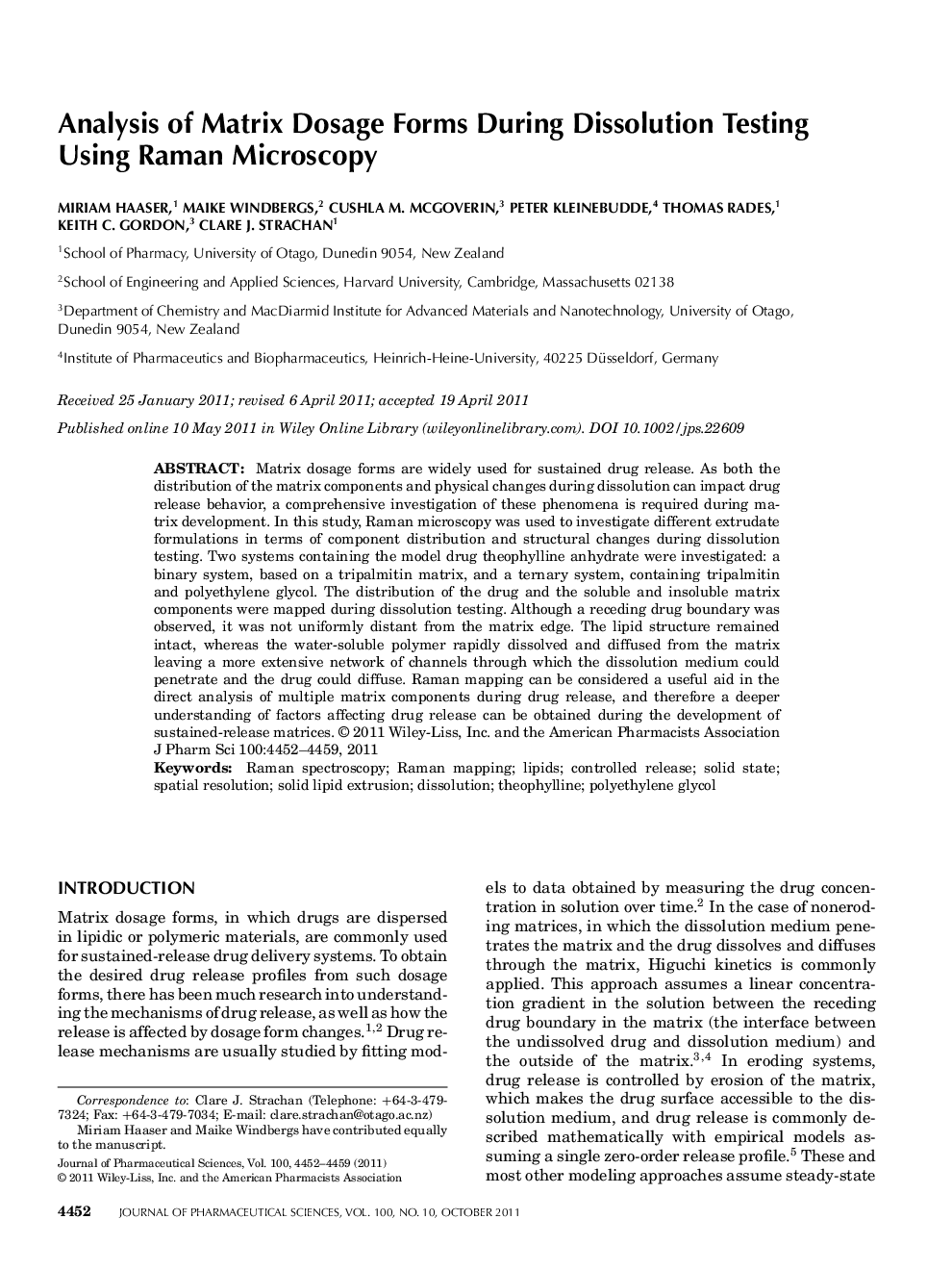| Article ID | Journal | Published Year | Pages | File Type |
|---|---|---|---|---|
| 2485288 | Journal of Pharmaceutical Sciences | 2011 | 8 Pages |
Abstract
Matrix dosage forms are widely used for sustained drug release. As both the distribution of the matrix components and physical changes during dissolution can impact drug release behavior, a comprehensive investigation of these phenomena is required during matrix development. In this study, Raman microscopy was used to investigate different extrudate formulations in terms of component distribution and structural changes during dissolution testing. Two systems containing the model drug theophylline anhydrate were investigated: a binary system, based on a tripalmitin matrix, and a ternary system, containing tripalmitin and polyethylene glycol. The distribution of the drug and the soluble and insoluble matrix components were mapped during dissolution testing. Although a receding drug boundary was observed, it was not uniformly distant from the matrix edge. The lipid structure remained intact, whereas the waterâsoluble polymer rapidly dissolved and diffused from the matrix leaving a more extensive network of channels through which the dissolution medium could penetrate and the drug could diffuse. Raman mapping can be considered a useful aid in the direct analysis of multiple matrix components during drug release, and therefore a deeper understanding of factors affecting drug release can be obtained during the development of sustainedârelease matrices. © 2011 WileyâLiss, Inc. and the American Pharmacists Association J Pharm Sci 100:4452-4459, 2011
Keywords
Related Topics
Health Sciences
Pharmacology, Toxicology and Pharmaceutical Science
Drug Discovery
Authors
Miriam Haaser, Maike Windbergs, Cushla M. McGoverin, Peter Kleinebudde, Thomas Rades, Keith C. Gordon, Clare J. Strachan,
